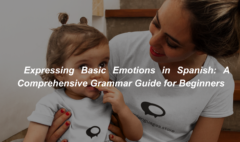Musik und Malerei: Exploring German Arts through Language
Musik und Malerei: Exploring German Arts through Language
Estimated reading time: 6 minutes
Introduction
Welcome to the vibrant world of “Musik und Malerei,” where the harmonious blend of music and painting offers a unique lens through which to explore the German language. This blog, crafted for the avid learners at Gearman Learns by Learn Languages Store, will guide you through the intricacies of planning a festival visit, discussing music, introducing musicians, understanding newspaper reports, and describing paintings. Along the way, we will enrich your vocabulary and provide cultural insights into Germany’s rich artistic heritage.

Germany is renowned for its diverse music festivals, from the classical notes of the Bayreuth Festival to the electronic beats of the Berlin Love Parade. Planning a visit to these festivals requires a good grasp of the language to navigate schedules, book tickets, and make the most of the experience.
Example Dialogue:
- German: Wann beginnt das Festival und wo kann ich Tickets kaufen?
- English: When does the festival start and where can I buy tickets?
- Hindi Pronunciation: वान बिगिन्ट दास फेस्टिवल उंड वो कान इश टिकेत्स काउफन?
Vocabulary List: Musik (Music)
- Konzert (n) – Concert
- Das Konzert beginnt um 20 Uhr.
- Pronunciation: कोंत्सेर्ट
- Musiker (m) – Musician
- Der Musiker spielt Gitarre.
- Pronunciation: म्यूज़िकर
- Band (f) – Band
- Die Band ist sehr bekannt.
- Pronunciation: बैंड
- Lied (n) – Song
- Das Lied ist schön.
- Pronunciation: लीद
- Bühne (f) – Stage
- Die Bühne ist groß.
- Pronunciation: ब्यूने
- Publikum (n) – Audience
- Das Publikum klatscht.
- Pronunciation: पब्लिकुम
- Festival (n) – Festival
- Das Festival dauert drei Tage.
- Pronunciation: फेस्टिवल
- Künstler (m) – Artist
- Der Künstler ist talentiert.
- Pronunciation: क्यूनस्टलर
- Auftritt (m) – Performance
- Der Auftritt war beeindruckend.
- Pronunciation: आउफ्ट्रिट
- Genre (n) – Genre
- Welches Genre magst du?
- Pronunciation: जॉन्रे
Asking Questions and Discussing Music
Engaging in conversations about music not only enhances your language skills but also deepens your appreciation for Germany’s musical landscape. Whether discussing the latest hits or classical compositions, asking the right questions is key.
Example Dialogue:
- German: Welche Musikrichtung gefällt dir am besten?
- English: Which music genre do you like best?
- Hindi Pronunciation: वेल्खे म्यूज़िकरिश्तुंग गफेल्ट दीर आम बेस्टन?
Introducing Musicians or Bands
Germany has produced a plethora of world-renowned musicians and bands. Introducing them in conversation can be a delightful way to share your musical interests and learn more about others’ preferences.
Example Introduction:
- German: Kennst du die Band Rammstein? Sie sind sehr berühmt in Deutschland.
- English: Do you know the band Rammstein? They are very famous in Germany.
- Hindi Pronunciation: केन्न्स्ट दू दी बैंड राम्मश्टाइन? ज़ी ज़िंड ज़ेयर बेरुह्म्त इन डॉइचलांड.
Understanding Newspaper Reports
Reading and understanding newspaper reports about music events or art exhibitions can significantly enhance your comprehension skills. These reports often provide detailed information about upcoming events, reviews, and cultural insights.
Example Report:
- German: Laut der Zeitung findet das Konzert am Samstag statt.
- English: According to the newspaper, the concert takes place on Saturday.
- Hindi Pronunciation: लाउट डेर साइटुंग फिंडेट दास कोंत्सेर्ट आम ज़ाम्स्ताग श्टाट.
Giving Detailed Information About People
Describing musicians, artists, or even festival-goers requires a good command of descriptive language. This skill is essential for painting a vivid picture in the listener’s mind.
Example Description:
- German: Der Musiker ist bekannt für seine einzigartige Stimme.
- English: The musician is known for his unique voice.
- Hindi Pronunciation: डेर म्यूज़िकर इस्ट बेकान्न्त फ्यूर ज़ाइने आइन्जिगार्टिगे श्टिमे.
Understanding and Describing Paintings
Describing paintings involves more than just identifying colors and shapes; it requires an understanding of the emotions and stories conveyed through art. This skill is particularly valuable when visiting galleries or discussing art with others.
-
Product on sale
 German B1
German B1₹32,600.00
₹36,300.00 -
Product on sale
 German A2
German A2₹18,300.00
₹24,300.00
Example Description:
- German: Das Gemälde zeigt eine ruhige Landschaft mit einem See.
- English: The painting shows a calm landscape with a lake.
- Hindi Pronunciation: दास गेमेल्डे त्साइग्त आइने रुहिगे लांडशाफ्ट मिट आइनेम ज़े.
Vocabulary List: Bildbeschreibung (Describing Paintings)
- Gemälde (n) – Painting
- Das Gemälde ist alt.
- Pronunciation: गेमेल्डे
- Farbe (f) – Color
- Die Farbe ist lebendig.
- Pronunciation: फार्बे
- Landschaft (f) – Landscape
- Die Landschaft ist schön.
- Pronunciation: लांडशाफ्ट
- Porträt (n) – Portrait
- Das Porträt ist realistisch.
- Pronunciation: पोर्ट्रेट
- Künstler (m) – Artist
- Der Künstler malt ein Bild.
- Pronunciation: क्यूनस्टलर
- Stil (m) – Style
- Der Stil ist modern.
- Pronunciation: श्टिल
- Motiv (n) – Motif
- Das Motiv ist interessant.
- Pronunciation: मोटीव
- Rahmen (m) – Frame
- Der Rahmen ist aus Holz.
- Pronunciation: राह्मेन
- Ausstellung (f) – Exhibition
- Die Ausstellung ist beeindruckend.
- Pronunciation: आउस्श्टेलुंग
- Abstrakt (adj) – Abstract
- Das Bild ist abstrakt.
- Pronunciation: अब्स्ट्राक्ट
Cultural Notes: The Network WG, Music and Painting History
The D-A-CH region (Germany, Austria, and Switzerland) boasts a rich history of music and painting. From the classical compositions of Beethoven and Mozart to the modern electronic beats emerging from Berlin, music is an integral part of the cultural fabric. Similarly, the art world has been shaped by influential movements such as Expressionism and Bauhaus, with artists like Wassily Kandinsky and Paul Klee leaving a lasting legacy.
In Germany, the concept of the “WG” (Wohngemeinschaft or shared apartment) is popular among students and young professionals. These living arrangements often become creative hubs where music and art are shared and appreciated collectively.
Enhance Your German Skills!
To improve your German further, consider enrolling in our A1 Level German Course at Learn Languages Store for just Rs. 16,300. Our courses are designed to help you build a strong foundation in the German language in a fun and engaging way.
Contact Us to Learn More!
For more information about our courses, feel free to reach out to us at:
Address:
330, 3rd Floor, Big Splash (Near Vashi Bus Depot),
Sector 17, Vashi,
Navi Mumbai, Maharashtra 400703
Phone: +91-9594113111
Email: services@learnlanguages.store
Don’t miss the opportunity to enhance your language skills! Sign up today and start your journey to fluency in German!
Conclusion
As we conclude this exploration of “Musik und Malerei,” we hope you feel inspired to delve deeper into the German language and culture. Whether you’re planning a festival visit, discussing your favorite band, or describing a painting, these skills will enrich your linguistic journey and connect you with the vibrant artistic traditions of the D-A-CH region. May your path be filled with harmonious melodies and vivid colors as you continue to learn and grow.










